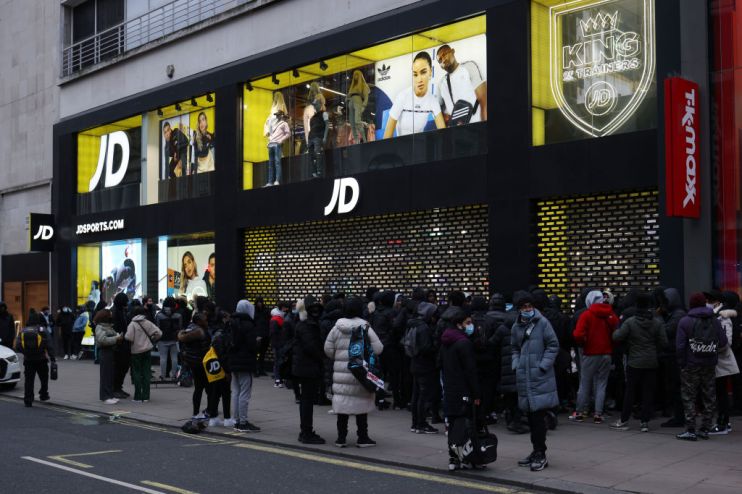JD Sports beats profit forecasts as it shakes off pandemic hit

JD Sports today reported full-year profits well ahead of market expectations as trading proved resilient despite the impact of store closures.
The fashion retailer booked profit before tax and exceptional items of £421m in the year to the end of January.
This was down from £439m the previous year but well ahead of market expectations of £295m. Revenue over the period ticked up marginally to £6.2bn.
The company said its UK division, which includes JD and Size?, retained roughly 70 per cent of revenues after shifting online during the initial lockdown in spring. This increased to 100 per cent when stores were closed again in November.
JD also hailed “exceptional trading” in the US, which it said was partly due to increased consumer demand caused by government stimulus. It has also pursued an aggressive expansion plan.
The brand opened its first flagship store in Times Square, New York, while a further 37 former Finish Line stores were converted to JD outlets over the year.
It made further acquisitions of California-based Shoe Palace, as well as DTLR after the year end.
In the UK, the Competition and Markets Authority is now reassessing JD’s merger with Footasylum after its initial decision to block the deal was quashed on appeal.
However, the company warned there was uncertainty over whether footfall to Footasylum would return to pre-pandemic levels and booked a £55.6m impairment charge as a result.
JD said it will pay a final dividend of 1.44p per share and forecast 2022 profit before tax of between £475m and £500m.
“A number of positive themes have been increasingly apparent through the year which gives us confidence that, as we begin to emerge from the worst of the disruption, JD is at the pinnacle of the global sports fashion industry,” said executive chairman Peter Cowgill.
“We have a market leading multichannel proposition which continues to enhance its relevance to consumers and has the necessary agility to progress in an environment where the retailing of international brands may see permanent global structural change.”